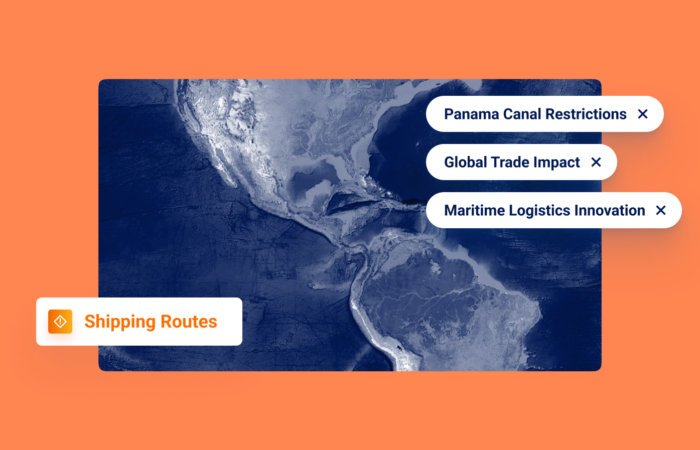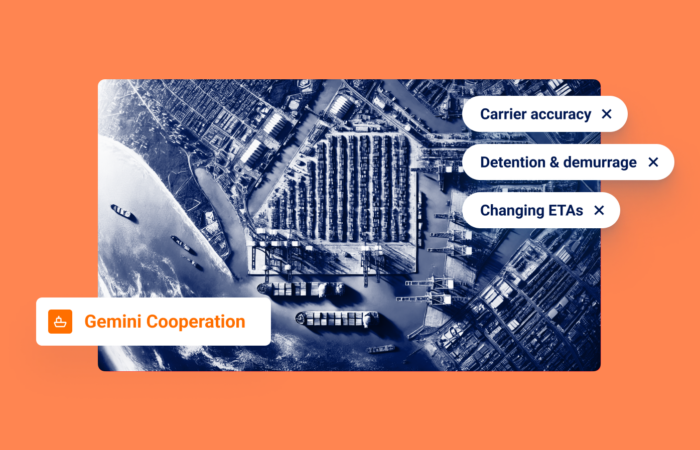4 maritime trends: 2023, the year of efficiency

What’s inside?
As we start 2023, major supply chain “woes” have been alleviated, the major crises that affected the supply chain in the last few years have come to an end, and the supply chain is slowly getting back to some sort of “normal.”
The major priorities for this year are making operations efficient and minimizing avoidable costs and fees, as in this slowing economy, every dollar spent will be scrutinized. “The global economy could face a recession and one of the weakest paces of growth on record in 2023, according to annual projections…by the World Bank Group, following a year of accelerated inflation, worsening financial conditions, and Russia’s invasion of Ukraine,” as noted by Forbes.
Whether you’re a freight forwarder, or an importer or exporter, these four maritime trends can be used to ensure your company is keeping up with the dynamic shifts in the world of supply chain and logistics.
1. Efficiency – driven by the drop in container prices, freight forwarders are now selling at lower prices, meaning a smaller margin. It’s essential that these businesses quickly increase efficiency to make more money from the service they offer. For importers and exporters, efficiency is also a priority for 2023, but for different reasons. It’s beneficial that prices have dropped, but because of the slowing economy, and a potential recession, the faster efficiency is achieved, the faster costs will be reduced.
2. Minimizing avoidable costs – considering the above, any avoidable fees need to be reduced as soon as possible. For example, detention and demurrage fees can be minimized if ETAs are accurate, and delays are avoided when possible.
As mentioned in our previous blogpost, here are a few important tips to avoid detention and demurrage fees:
✔ Invest in tech – invest in technology that will enhance your supply chain visibility and help keep track so you can prepare for any potential delays. Enhanced track and trace with full visualization of the exact container location and details of the entire route, as well as an in-depth analysis of port congestion, are both must-have features for any ocean freight visibility solution.
✔ Advanced planning – planning out your shipment so that you have a good idea of your timeline is very valuable. With carrier ETAs often inaccurate, trying to include buffer days in case of delays is a helpful strategy.
✔ Operate in real time – get real-time updates on ATA and ATD, and reassess these timestamps whenever detention and demurrage invoices arrive to support invoice reconciliation and raise any discrepancies.
✔ Be well prepared for customs – keep all your documentation prepared and organized for customs clearance. Ensure you have the basics ready to go – this includes commercial paperwork, bill of lading, and commodity codes.
3. An expected drop in congestion – consumers are buying less and spending less money. This means fewer goods are being shipped and demand is low. We’ve already started seeing this trend in a few ports globally, for example:
- Savannah, in the U.S., decreased its average vessel turnaround time by 24%, tying neighboring Charleston, for second place in the region. Savannah did better with feeder vessels than Charleston, while Charleston was faster than Savannah on ultra-large vessels. Savannah also saw a 31.4% decrease in congestion, the biggest drop in 10 months.

- The port of Hamburg continues to improve its efficiency on two fronts – transit times and port call durations. For the 4th consecutive month, Hamburg has seen double-digit monthly improvement percentages in transit times, bringing congestion levels down to what they were in May 2022. It is still the slowest out of the top eight ports in Europe to turn around vessels, despite a 2% decrease.

4. A potential shift in trade routes – in the second half of 2022, the total TEU capacity of vessels transiting from China to the U.S. decreased by 16% compared to the same period in 2020. During these six months, the size of the U.S.-bound vessels coming from other parts of Asia and Europe increased by 6% and 10%, respectively. The decrease in trade volumes during this time period is being seen mostly in the U.S., while the TEU capacity of vessels headed for Europe from China grew by 60% in the second half of 2022, compared to 2020. These numbers from China to the U.S. potentially support the claim that the U.S. is looking for alternative options.
2023 is shaping up to be a year where efficiency and cost-effectiveness will be key for companies in the maritime industry. From keeping an eye on trade route shifts to investing in tech-savvy solutions, companies who stay agile and adapt to the changing landscape will come out on top. As we set sail into the new year, let’s make sure we’re all on the right course to success.












